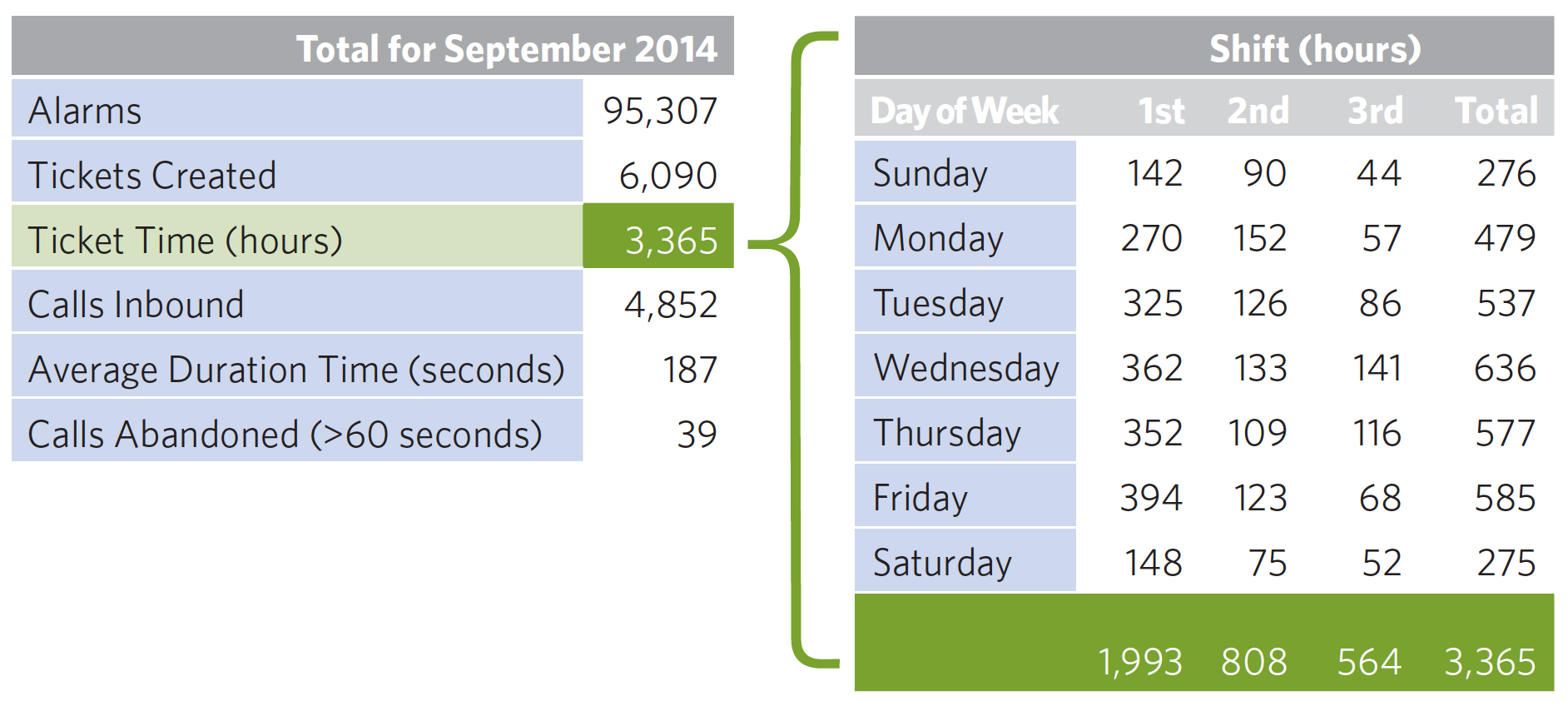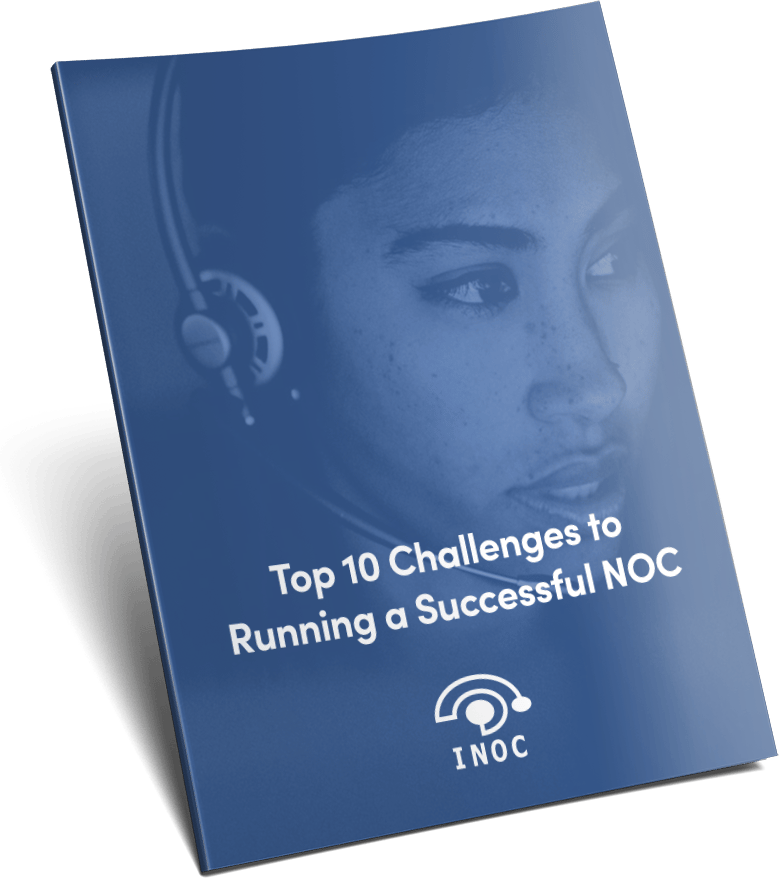
High-performance NOCs are a function of high-performing people. Running a 24x7 NOC requires staffing three shifts a day, 365 days a year. When a NOC doesn’t have a concerted staffing strategy, this can lead to high turnover, low morale, and difficulty in hiring and retaining staff. When putting a strategy together to fill this need, the following factors should be considered:
Effectively staffing a 24x7 NOC starts with a well-organized structure. A tiered NOC support structure and workflow queues are a good starting point for determining the skill level required of your NOC staff.

This illustration shows an example of a skills-based NOC structure that can be adapted not only to support your 24x7 NOC requirements, but also to provide a growth plan for employees that is essential for retention. Once the NOC is organized and the position descriptions are created, your HR team should be armed with clear directives for hiring and retention.
Consider the overall activity of your NOC, including the volume of calls, emails and alarms handled by hour of day, day of week and type of support engineer, as well as the duration of incidents.

The table shown above offers an example of such metrics for a specific NOC. Data like this can be translated into a working schedule for each type of support engineer needed to satisfy the staffing requirements of your NOC.
Be sure to take into consideration the benefits that your company provides for employees. For example, if your company provides 10 holidays and four weeks of PTO per employee, these hours need to be accounted for to ensure that your NOC runs smoothly.
A NOC training program should include initial onboarding as well as ongoing training. It may take up to six months of various classes and on-the-job training before an engineer is ready to take on NOC support responsibilities. After work has begun, monthly or quarterly training sessions should be scheduled to keep engineers’ skills fresh and to update the support team on new types of services, new customer requirements, and new equipment.
A certain rate of attrition within the NOC should be taken into account, based on your historical data and on industry standards. Factors that affect retention rates include company culture as well as NOC organization — i.e., whether there’s a clear path for employee growth from one level to the next or to other departments within the organization.
By making these calculations, you can better plan for staffing and training needs. For example, assuming that a typical engineer works five years in your NOC (a retention rate of 80%), you’d need to hire an additional 20% of staff each year.
In most organizations, staffing a 24x7 NOC is often a needlessly high expenditure compared to strategically outsourcing support as a predictable operating expense. Given the payroll and overhead costs of building a NOC in-house, many companies that outsource with us cut their total cost of ownership in half.
A plan that doesn’t consider this opportunity might, for example, call for a staff of 12 full-time employees, when in fact, the same or likely better support could be provided through an outsourced service solution that takes full advantage of an economy of scale to provide far better service at a far lower cost.
In addition to staffing costs, the cost of acquiring, implementing, and integrating a full suite of NOC tools only further tips the scale in favor of outsourcing much of the time.
Perhaps the most apparent difference between homegrown and outsourced NOCs are the capabilities that come with an already-mature NOC operation and access to niche NOC expertise.
Between planning a NOC build, hiring a team, training that team, and aligning over the operational plan, in-house NOCs can expect 16 to 24 weeks minimum before all the parts are even in place. It can then take months or years to gain confident control over the system and bring it into a state of real operational maturity.
Turning up support with an outsourced NOC condenses all that time and effort into a number of weeks instead of years—often far more cost-effectively.

Download our free white paper and learn how to overcome the top challenges in running a successful NOC.
